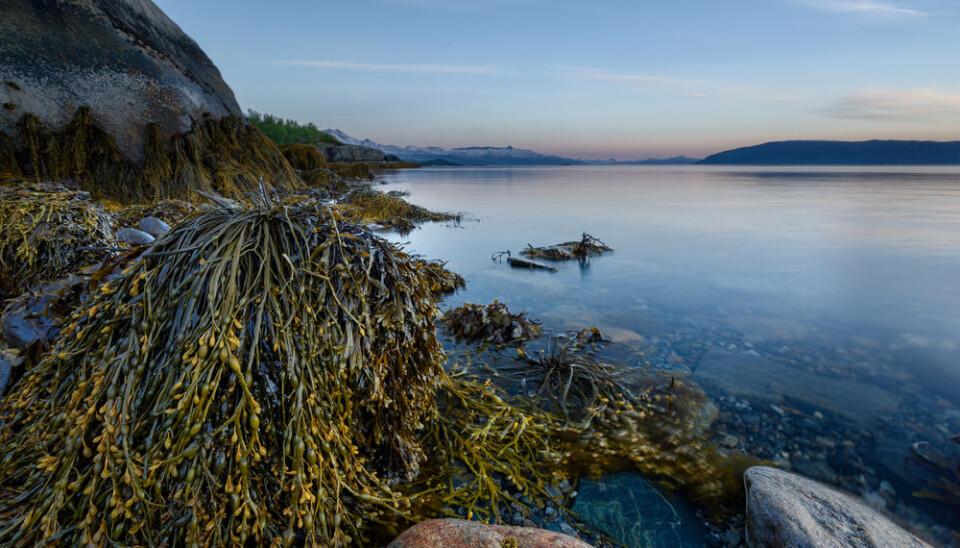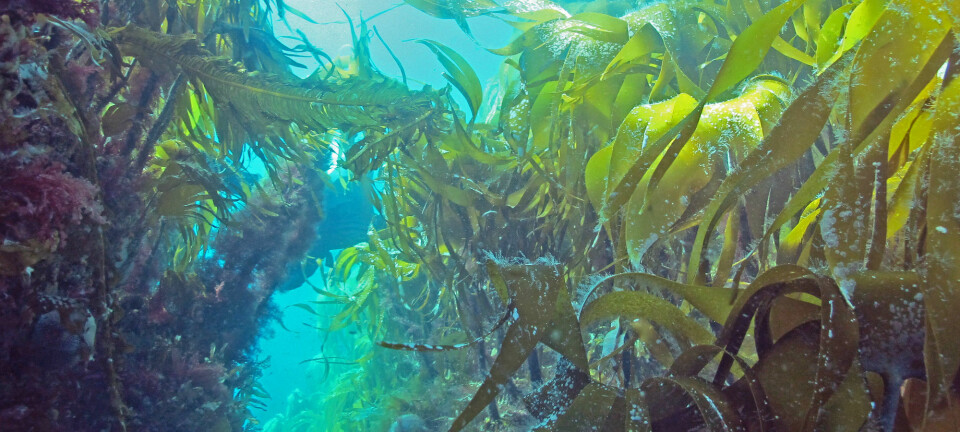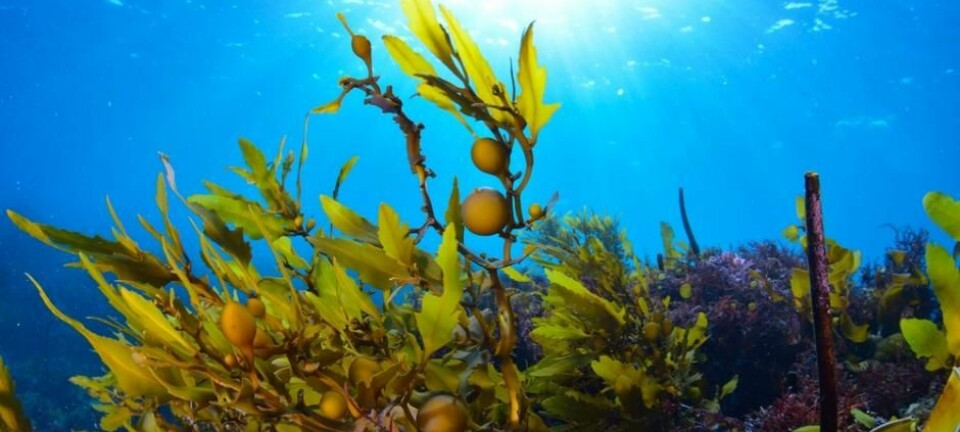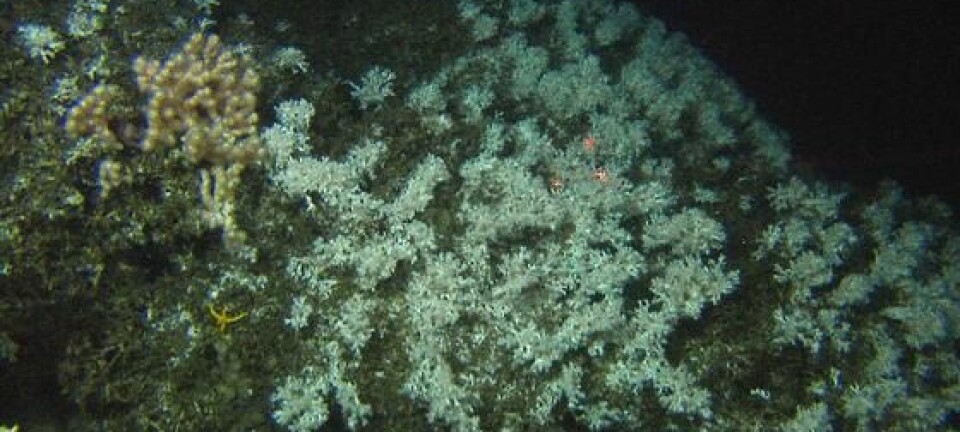
How Nordic marine forests can help fight climate change
Despite the wealth of marine forests throughout the Nordics, we are yet to exploit their potential role in combating climate change. Here’s what we need to do.
Research suggests that are many reasons to fall in love with marine forests, even the seaweed that gets wrapped around your feet when taking a dip in the sea.
In our previous article we explored how marine forests such as kelp and eelgrass provide a two-pronged approach to help combat climate change by soaking up CO2 from the atmosphere and locking it away at the seabed, so-called Blue Carbon.
We also showed how they can help adapt to sea level rise, reduce coastal flooding and create oases of high pH.
A number of governments around the world have already taken the first steps to mitigate and adapt to climate change by conserving and restoring marine forests.
But remarkably, despite the wealth of marine forests throughout the Nordics, we are yet to fully explore these “Blue Carbon Strategies” and exploit its potential role in combating climate change.
Fortunately, this is starting to change, but we still have quite a way to go. Here’s how we can get there.
Read More: Marine forests - Natures own carbon capture and storage
Untapped potential of Blue Carbon in the Nordics
Despite the clear abundance of marine forests in the Nordics, their potential to store Blue Carbon has not yet been quantified. For this, we need to know the precise area, amount of biomass, and capacity for carbon burial which are all poorly resolved.
The ‘best estimate’ for Blue Carbon stocks in the Nordics is that of eelgrass, which has been quantified for deep and shallow meadows of Denmark, shallow meadows of Finland and for a shallow meadow in Greenland.
The carbon stocks at the seafloor below the widespread Danish eelgrass meadows are estimated to represent about 5.868 Mega tons (i.e. million tons) of carbon. In Finland, this is much smaller, about 0.019 Mega tons.
Unfortunately, there are as yet no estimates for the Blue Carbon potential in Nordic kelp forests. Although modeling suggests that kelp forests in Norway have a biomass of nearly 80 million tons, taking up 30 million tons CO2 from the atmosphere each year.
Even if just 10 per cent of this is eventually locked away as Blue Carbon, these forests represent a large potential carbon sink by anyone’s standards!
Explore the world of Blue Carbon in our interactive graphic above, to see how Nordic kelp forests and seagrass meadows can soak up, transport, and store CO2. Problems viewing the graphic? Try rotating your mobile phone, or click here to view in a new browser window. (Graphic: ScienceNordic and ForskerZonen)
First step: Good estimates of marine forests
It’s clear that we need better information about the true extent of marine forests and their contribution to carbon burial: Not least because this is a necessary step for establishing a standard methodology to include Blue Carbon in national inventories of greenhouse gas emissions.
Specifically, for marine forests to be included in national inventories in a legally binding way, the carbon captured by these forests must be “accountable” and “actionable.”
This means that we need to know:
- the full extent of marine forests in our Nordic areas and around the world
- present solid documentation of their carbon sink capacity
- show that the sinks can be managed by specific actions to control the amount of carbon stored.
Only then, can we manage marine forests and potentially include Nordic Blue Carbon in our national carbon reporting.
For macroalgal and kelp forests, this task is particularly demanding as they export carbon to sinks far away from the forests, which require novel fingerprinting techniques to detect and attribute the carbon stocks they support.
Read More: Will climate change affect Norwegian kelp forests in a positive way?
Blue Carbon is already a part of the Paris Agreement
The first step towards this came in 2013, when the UN International Panel on Climate Change issued guidelines for how this might be done for wetlands, including seagrasses, tidal marshes, and mangroves.
But it did not include kelps and other macroalgae, as it only recently became clear that they may be a substantial Blue Carbon store.
So far, 29 nations, including Iceland and a number of tropical countries, have included Blue Carbon in their nationally determined contributions for mitigating climate change under the Paris Agreement. While about 60 nations have included Blue Carbon under their adaptation actions.
This is supported by the “Blue Carbon Partnership”, which supports nations in developing national objectives to address climate change using Blue Carbon strategies, and the "Blue Carbon Initiative," which is coordinating two international working groups to advise on the research that is still needed, as well as project implementation, and policy priorities.
Read More: Greenland seaweed helps combat ocean acidification
Pan-Nordic projects are now under way
Meanwhile, the first Nordic initiatives are under way to fill the Blue Carbon knowledge gaps in the North.
For example, in Denmark, the Villum Foundation has funded the project "Marine Forests" ("Havets Skove"). This is a one-year collaboration between the University of Southern Denmark, Aarhus University, the Geological Survey of Denmark and Greenland, and the Danish Technical University (DTU-Aqua), which aims to provide an initial quantification of the area of Danish marine forests and their associated ecosystem services, including Blue Carbon.
And the Independent Research Fund Denmark has funded the project CARMA: CARbon sequestration by Greenland’s MArine forests in a warming Arctic - a 3-year project starting 1. December 2018 with the aim of exploring the role of Arctic kelp forests in carbon sequestration. The project is led by Department of Bioscience and the Arctic Research Centre at Aarhus University.
In Norway the three-year project, "Blue Carbon" (Blått karbon, 2017-19) has been funded by the Norwegian Environment Agency, through the Nordic Council of Ministers. The project is lead by the Norwegian Institute for Water Research (NIVA), in collaboration with Institute of Marine Research and GRID-Arendal, Norway, Aarhus University in Denmark, Åbo Akademi University in Finland, and the University of Gothenburg, Sweden.
This project will provide an updated overview of the carbon cycle of blue forests, including kelp, eelgrass, and rockweed in the Nordic countries. This project will also provide a knowledge basis for evaluating the potential for including kelp carbon in national carbon reporting, following IPCC Guidelines for National Greenhouse Gas inventories.
Hopefully, these are the first of many initiatives in a long-term effort to quantify the role of Nordic marine forests in the fight against climate change.
Sustainable management of these important ecosystems, which are particularly widespread along the shores of Nordic nations, could be an important step to both adapt to, and mitigate, climate change.
---------------
Read this article in Danish at ForskerZonen, part of Videnskab.dk
Scientific links
- Sequestration of macroalgal carbon: the elephant in the Blue Carbon room (2018). Biology Letters. DOI: 10.1098/rsbl.2018.0236
- Expanding Greenland seagrass meadows contribute new sediment carbon sinks. Scientific Reports. (2018) DOI: 10.1038/s41598-018-32249-w







